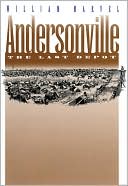Category Books
- Fiction Books & Literature
- Graphic Novels
- Horror
- Mystery & Crime
- Poetry
- Romance Books
- Science Fiction & Fantasy
- Thrillers
- Westerns
- Ages 0-2
- Ages 3-5
- Ages 6-8
- Ages 9-12
- Teens
- Children's Books
- African Americans
- Antiques & Collectibles
- Art, Architecture & Photography
- Bibles & Bible Studies
- Biography
- Business Books
- Christianity
- Computer Books & Technology Books
- Cookbooks, Food & Wine
- Crafts & Hobbies Books
- Education & Teaching
- Engineering
- Entertainment
- Foreign Languages
- Game Books
- Gay & Lesbian
- Health Books, Diet & Fitness Books
- History
- Home & Garden
- Humor Books
- Judaism & Judaica
- Law
- Medical Books
- New Age & Spirituality
- Nonfiction
- Parenting & Family
- Pets
- Philosophy
- Political Books & Current Events Books
- Psychology & Psychotherapy
- Reference
- Religion Books
- Science & Nature
- Self Improvement
- Sex & Relationships
- Social Sciences
- Sports & Adventure
- Study Guides & Test Prep
- Travel
- True Crime
- Weddings
- Women's Studies
Andersonville: The Last Depot »

Authors: William Marvel
ISBN-13: 9780807857816, ISBN-10: 0807857815
Format: Paperback
Publisher: University of North Carolina Press, The
Date Published: August 2006
Edition: (Non-applicable)
Author Biography: William Marvel
William Marvel's many books include A Place Called Appomattox, Lee's Last Retreat: The Flight to Appomattox, and The Alabama and the Kearsarge: The Sailor's Civil War (all from the University of North Carolina Press). He lives in South Conway, New Hampshire.
Book Synopsis
Between February 1864 and April 1865, 41,000 Union prisoners of war were taken to the stockade at Anderson Station, Georgia, where nearly 13,000 of them died. Most contemporary accounts blame the tragedy on the Confederates who administered the prison or on a conspiracy of higher-ranking officials. According to Marvel, virulent disease and severe shortages of vegetables, medical supplies, and other necessities combined to create a crisis beyond the captors' control. He also argues that the tragedy was aggravated by the Union decision to suspend prisoner exchanges, which meant that many men who might have returned home were instead left to sicken and die in captivity.
KLIATT
Back in 1955, MacKinlay Kantor made the prisoner-of-war camp at Andersonville, Georgia, a byword for all of the horrors of the Civil War. His novel, Andersonville, so vividly depicted the starvation, squalor and casual brutalities of the Confederate military prison that ever since it has symbolized man's needless inhumanity to man. In actual fact, he was not far off the mark: prisoners were allowed to starve to death in other POW camps, North as well as South, and in any case the medical and sanitary conditions of the day practically guaranteed a huge death toll no matter how humanely they functioned. No one expected anything much better. It has remained for author William Marvel, however, to acquaint the reading public with some of the "whys" behind Andersonville's horrors. The Confederate government had opened the new prison late in the war, as a temporary holding pen for newly captured Union troops until they could be exchanged. It was really an outdoor camp consisting of a few fenced-in pastures crossed by a brook, and guarded by an antiquated fort. Marvel blames the breakdown in the prisoner exchange system and a callous indifference of the North to the dismal fate of its captive soldiers. As the last winter of the war set in, the fields turned to muddy quagmires, gaunt soldiers scratched out shallow wells and shelters in their enclosure, and their almost-adequate rations dwindled to practically nothing. Nearly 13,000 of them died. In all fairness, at the end the prison guards were starving alongside their captives. There is no end to the literature about Andersonville, and author Marvel really is just retelling what most students of the Civil War already know. He does itin fine style, though: footnoted enough for the scholar, thoroughly readable for everyone else, and studded with lots of contemporary photos. As for Andersonville, Georgia itself: the surprisingly tiny "star" fort overlooks seemingly ordinary fields still being picked over by antiquarians. The hamlet of Andersonville drowses nearby, and a dusty yellow memorial bravely commemorates Henry Wirz, hanged after the war for what happened there.
Table of Contents
Subjects
 American History
American History  United States Armed Forces
United States Armed ForcesHistory
 American History
American History  United States History - 19th Century - Civil War
United States History - 19th Century - Civil WarHistory
 American History
American History  United States History - 19th Century - General & Miscellaneous
United States History - 19th Century - General & MiscellaneousHistory
 Military History
Military History  General & Miscellaneous Military History
General & Miscellaneous Military HistoryHistory
 Military History
Military History  United States Armed Forces
United States Armed ForcesHistory
 Military History
Military History  United States History - 19th Century - Civil War
United States History - 19th Century - Civil WarNonfiction
 History
History  American History
American HistoryNonfiction
 History
History  Military History
Military History
